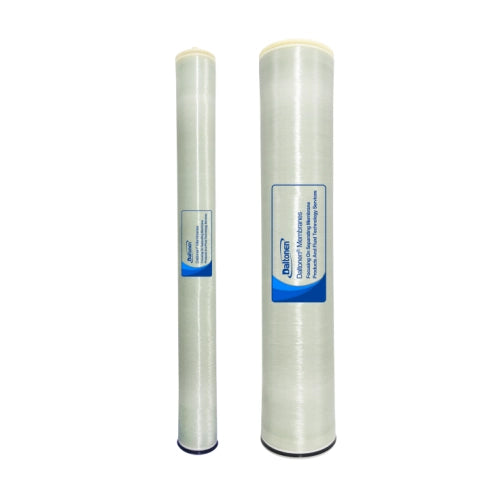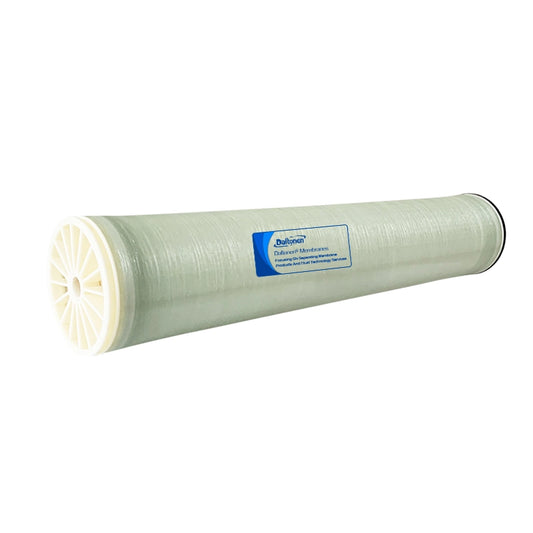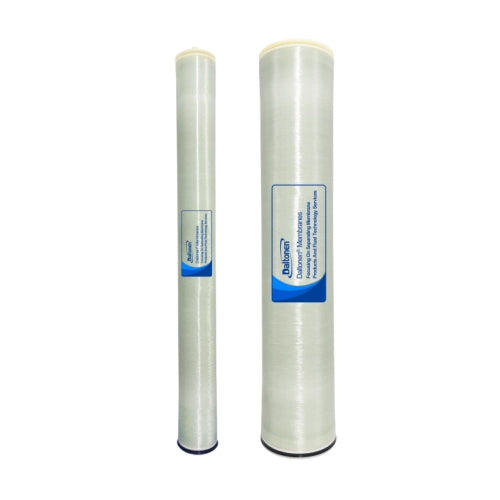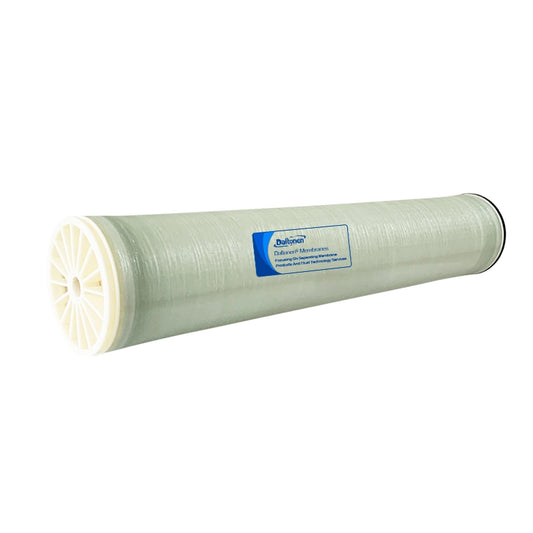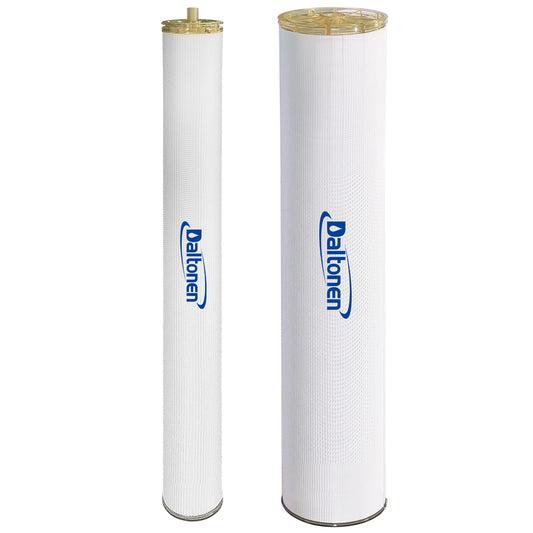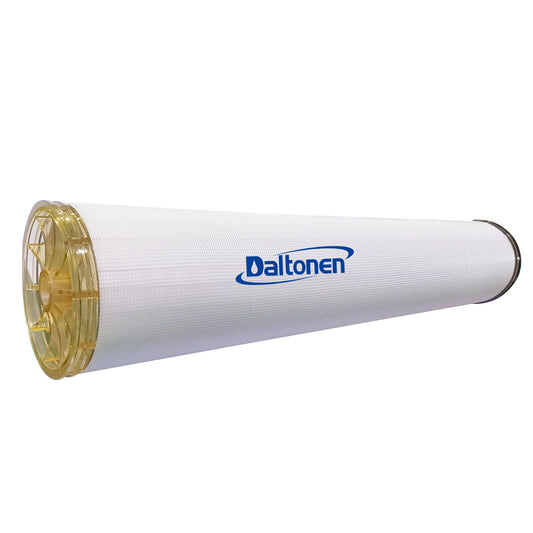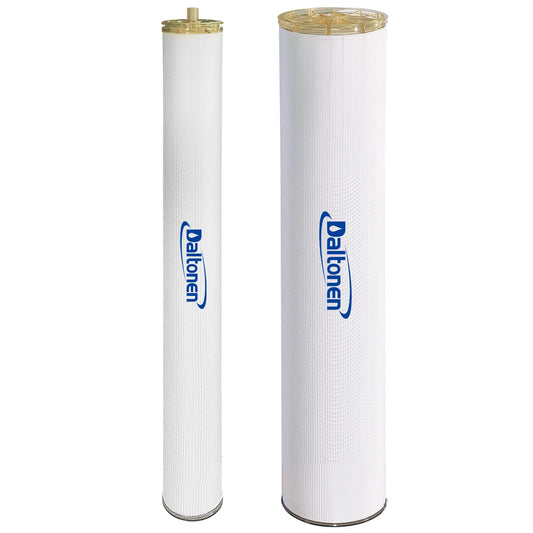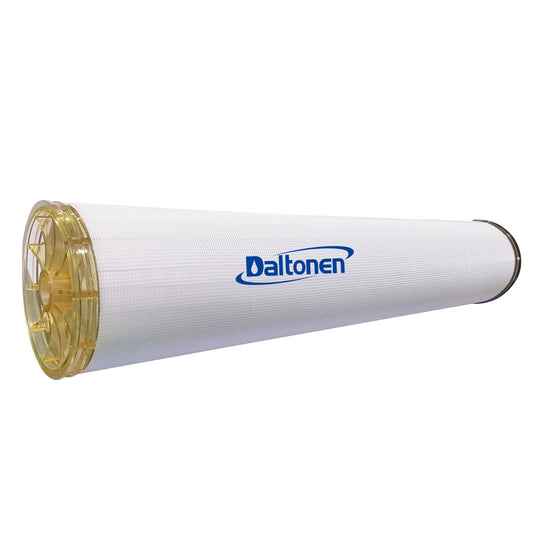Where are the Rolled Ultrafiltration Membranes Commonly Used?
27 Apr 2025
1. Applications of Rolled Ultrafiltration Membranes in Water Treatment
1.1 Purification of Municipal Water Supply
Rolled ultrafiltration membranes play a significant role in the purification of municipal water supply. They can effectively remove suspended solids, colloids, bacteria, viruses, and other impurities from water, ensuring that the water quality meets drinking water standards. According to relevant research data, the removal rate of particles larger than 0.01 micrometers in water by rolled ultrafiltration membranes can reach over 99.99%, significantly enhancing the sanitary safety of drinking water. In the water supply systems of some cities, after the adoption of rolled ultrafiltration membrane technology, the turbidity of water has been reduced to below 0.1 NTU, far lower than the effluent turbidity of traditional treatment processes, providing residents with higher quality drinking water.

1.2 Pretreatment of Industrial Water
In industrial production, rolled ultrafiltration membranes are commonly used in the pretreatment stage of industrial water. For industries with high water quality requirements such as electronics, pharmaceuticals, and chemicals, rolled ultrafiltration membranes can remove most impurities from the raw water, reducing the load on subsequent advanced treatment processes. For example, in the preparation of ultrapure water in the electronics industry, rolled ultrafiltration membranes, as a pretreatment unit, can effectively remove organic matter, microorganisms, and particulate matter from water, reducing the SDI (pollution index) of water quality to below 3. This provides good feed water conditions for subsequent treatment processes such as reverse osmosis, extends the service life of reverse osmosis membranes, and reduces the operating costs of the system. Statistics show that in industrial water systems using rolled ultrafiltration membranes for pretreatment, the replacement cycle of reverse osmosis membranes can be extended by more than 30%.
1.3 Wastewater Treatment and Reuse
Rolled ultrafiltration membranes also have extensive applications in the field of wastewater treatment and reuse. They can be used as advanced treatment units in wastewater treatment plants to further purify wastewater that has undergone secondary treatment, removing suspended solids, some dissolved organic matter, and pathogens from water, enabling the effluent quality to meet reuse standards. In some water-scarce regions, wastewater treatment plants using rolled ultrafiltration membrane technology can achieve a reuse rate of over 50%, effectively alleviating the problem of water resource shortage. For example, in a wastewater treatment plant in an industrial park, the treated wastewater is used for industrial cooling water makeup and landscaping irrigation, saving about 1 million cubic meters of fresh water resources annually and reducing environmental pollution caused by wastewater discharge.
2. Applications of Rolled Ultrafiltration Membranes in the Food and Beverage Industry
2.1 Clarification and Concentration of Fruit Juice
Rolled ultrafiltration membranes have significant advantages in the clarification and concentration of fruit juice. They can effectively remove suspended solids, colloids, and some large molecular proteins from fruit juice, making it clear and transparent while retaining the nutritional components and flavor substances in the juice. Studies have shown that fruit juice treated with rolled ultrafiltration membranes can achieve a light transmittance of over 90%, which is significantly better than traditional clarification methods. In the concentration process, rolled ultrafiltration membranes selectively permeate water molecules, increasing the soluble solid content of fruit juice to 2-3 times the original amount, greatly reducing the volume of fruit juice for easier storage and transportation. Taking apple juice as an example, the loss rate of sugar and aroma components in apple juice concentrated with rolled ultrafiltration membranes is less than 5%, while the loss rate of traditional concentration methods is usually between 10% and 15%. This indicates that rolled ultrafiltration membranes have significant advantages in maintaining the quality of fruit juice.
2.2 Applications in Dairy Processing
In the dairy processing process, rolled ultrafiltration membranes are mainly used for the pretreatment of milk and the concentration of whey protein. For milk pretreatment, rolled ultrafiltration membranes can remove bacteria, microorganisms, and some impurities from milk, improving the sanitary quality of milk and extending its shelf life. Experimental data shows that the total bacterial count in milk treated with rolled ultrafiltration membranes can be reduced to below 100 CFU/mL, far below the limit specified by national food safety standards. In terms of whey protein concentration, rolled ultrafiltration membranes can increase the protein concentration in whey to 20%-30%, providing a raw material basis for the production of high-quality whey protein powder. In addition, rolled ultrafiltration membranes have the advantages of simple operation, low energy consumption, and no phase change in the dairy processing process, effectively reducing production costs and improving production efficiency. Statistics show that dairy processing plants using rolled ultrafiltration membrane technology can reduce production costs by 15%-20% and increase product added value by 20%-30%.
3. Applications of Rolled Ultrafiltration Membranes in the Pharmaceutical Industry
3.1 Drug Purification and Concentration
Rolled ultrafiltration membranes play a key role in the purification and concentration of drugs in the pharmaceutical industry. They can effectively remove impurities, microorganisms, and large molecular impurities from drug solutions while retaining the active ingredients of the drugs. For example, in the production of antibiotics, rolled ultrafiltration membranes can remove impurities such as cells and proteins from fermentation broth, increasing the purity of antibiotics to over 95%, significantly improving the quality and stability of the drugs. In addition, rolled ultrafiltration membranes can also be used for protein concentration in biopharmaceuticals, selectively permeating small molecular impurities and increasing protein concentration to 3-5 times the original amount, greatly improving drug production efficiency. Statistics show that enterprises using rolled ultrafiltration membranes for drug purification and concentration can increase production efficiency by 20%-30% and significantly improve product purity and quality.
3.2 Medical Endotoxin Removal
In the pharmaceutical industry, endotoxins are one of the important factors affecting drug quality and safety. Rolled ultrafiltration membranes can effectively remove endotoxins from drug solutions, ensuring the safety and effectiveness of drugs. Studies have shown that the removal rate of endotoxins by rolled ultrafiltration membranes can reach over 99%, meeting strict drug quality standards. For example, in the production of injections, rolled ultrafiltration membranes can remove endotoxins such as bacterial endotoxins from solutions, keeping the endotoxin content of injections below the limit specified by national drug standards. In addition, rolled ultrafiltration membranes have the advantages of simple operation, low energy consumption, and no chemical additives in the endotoxin removal process, effectively reducing production costs and improving production efficiency. Statistics show that enterprises using rolled ultrafiltration membranes for medical endotoxin removal can reduce production costs by 10%-15% and significantly improve product quality and safety.

4. Applications of Rolled Ultrafiltration Membranes in the Environmental Protection Field
4.1 Industrial Wastewater Treatment
Rolled ultrafiltration membranes have significant application value in the field of industrial wastewater treatment. They can effectively remove suspended solids, colloids, bacteria, viruses, and some organic matter from wastewater, significantly improving the quality of wastewater and enabling it to meet discharge standards or reuse requirements. In industrial fields such as chemical, dyeing, and electroplating, wastewater contains a large amount of pollutants, and traditional treatment methods are difficult to achieve ideal treatment effects. The application of rolled ultrafiltration membrane technology provides an effective solution for wastewater treatment in these industries.
-
Removal Efficiency: Studies have shown that the removal rate of particles larger than 0.01 micrometers in wastewater by rolled ultrafiltration membranes can reach over 99.9%, and the removal rate of chemical oxygen demand (COD) can reach 30%-50%, while the removal rate of ammonia nitrogen can reach 20%-30%. For example, in the wastewater treatment system of a dyeing factory, after the adoption of rolled ultrafiltration membrane technology, the color removal rate of wastewater reached over 80%, significantly improving the appearance and quality of wastewater.
-
Reuse Value: The quality of wastewater treated with rolled ultrafiltration membranes is relatively good and can be reused as industrial water, achieving the recycling of water resources. In water-scarce areas, this advantage is particularly important. For example, in an electroplating wastewater treatment project in an industrial park, the reuse rate of wastewater treated with rolled ultrafiltration membranes reached over 60%, saving a large amount of fresh water resources annually and reducing environmental pollution caused by wastewater discharge.
-
Cost-effectiveness: Although the initial investment of rolled ultrafiltration membranes is relatively high, their operating costs are relatively low, and their service life is long. In long-term operation, their comprehensive cost-effectiveness is relatively significant. Statistics show that the operating costs of industrial wastewater treatment systems using rolled ultrafiltration membrane technology can be reduced by 15%-20%, while also reducing the load on subsequent advanced treatment processes, further reducing treatment costs.
4.2 Applications in Exhaust Gas Treatment
Rolled ultrafiltration membranes also have certain application potential in the field of exhaust gas treatment, especially in the removal of particulate matter and some organic pollutants in exhaust gas.
-
Particulate Matter Removal: Rolled ultrafiltration membranes can effectively remove particulate matter from exhaust gas, including dust and smoke. Their removal rate of particles larger than 0.1 micrometers can reach over 95%, significantly reducing the concentration of particulate matter in exhaust gas and reducing air pollution. For example, in the exhaust gas treatment system of a cement plant, after the adoption of rolled ultrafiltration membrane technology, the emission concentration of particulate matter in exhaust gas was reduced to below 10 mg/m³, far below the limit specified by national emission standards.
-
Organic Pollutant Removal: Rolled ultrafiltration membranes also have certain removal capabilities for some organic pollutants in exhaust gas. Through the dual action of physical adsorption and membrane separation, they can remove volatile organic compounds (VOCs) and odor substances from exhaust gas. Studies have shown that the removal rate of VOCs by rolled ultrafiltration membranes can reach 20%-30%, while the removal rate of odor substances can reach 30%-40%. For example, in an exhaust gas treatment project of a chemical enterprise, after the adoption of rolled ultrafiltration membrane technology, the emission concentration of VOCs in exhaust gas was reduced to below 20 mg/m³, significantly improving the quality of the surrounding environment.
-
Combined Processes: Rolled ultrafiltration membrane technology is usually used in combination with other exhaust gas treatment processes (such as activated carbon adsorption and catalytic combustion) to improve the overall effect of exhaust gas treatment. This combined process can fully leverage the advantages of each technology to achieve efficient removal of multiple pollutants in exhaust gas. For example, in the exhaust gas treatment system of a pharmaceutical enterprise, after the adoption of a combined process of rolled ultrafiltration membranes and activated carbon adsorption, the removal rates of particulate matter, VOCs, and odor substances in exhaust gas all reached over 90%, significantly improving the efficiency and effectiveness of exhaust gas treatment.
5. Applications of Rolled Ultrafiltration Membranes in Other Fields
5.1 Electro泳 Paint Recovery
Rolled ultrafiltration membranes have significant application value in the recovery of electro泳 paint. Electro泳 paint is a surface coating material widely used in industries such as automobiles and home appliances, and its recovery and utilization are of great significance for reducing costs and environmental pollution.
-
Recovery Efficiency: Rolled ultrafiltration membranes can effectively separate solid particles and liquid components in electro泳 paint, with a recovery rate of 80%-90%. For example, in the electro泳 paint recovery system of an automobile manufacturing enterprise, after the adoption of rolled ultrafiltration membrane technology, the recovery rate of electro泳 paint was increased by 20%-30%, significantly reducing production costs.
-
Cost-effectiveness: By recovering electro泳 paint with rolled ultrafiltration membranes, not only can the purchase of new paint be reduced, but the cost of wastewater treatment can also be reduced. Statistics show that electro泳 paint recovery systems using rolled ultrafiltration membrane technology can save costs of about 10%-15% annually for enterprises, while reducing environmental pollution.
-
Environmentally Friendly: In the recovery process of electro泳 paint, rolled ultrafiltration membranes have no chemical additives, simple operation, low energy consumption, and meet environmental protection requirements. Their removal rate of chemical oxygen demand (COD) in wastewater can reach 50%-60%, significantly reducing the pollution load of wastewater.
5.2 Mineral Water Production
Rolled ultrafiltration membranes play an important role in the production of mineral water, mainly used to remove impurities and microorganisms from water to ensure the safety and taste of mineral water.
-
Water Quality Purification: Rolled ultrafiltration membranes can effectively remove suspended solids, colloids, bacteria, viruses, and other impurities from mineral water source water, ensuring that mineral water meets national drinking water standards. Studies have shown that the removal rate of particles larger than 0.01 micrometers in mineral water source water by rolled ultrafiltration membranes can reach over 99.99%, and the removal rate of total bacteria count can reach over 99%.
-
Retention of Minerals: Compared with traditional filtration technologies, rolled ultrafiltration membranes can retain minerals in water such as calcium, magnesium, and potassium while removing impurities. These minerals are beneficial to human health. For example, in a mineral water production enterprise, after the adoption of rolled ultrafiltration membrane technology, the mineral content in mineral water is kept within a reasonable range, resulting in better taste.
-
Cost-effectiveness: The application of rolled ultrafiltration membrane technology in mineral water production not only improves water quality but also reduces production costs. Its operating costs are relatively low, its service life is long, and its maintenance is simple. Statistics show that mineral water production enterprises using rolled ultrafiltration membrane technology can reduce production costs by 10%-15%, while also improving the market competitiveness of their products.
-
Market Demand: With the increasing demand for healthy drinking water, the market for mineral water is continuously expanding. The application of rolled ultrafiltration membrane technology provides reliable water quality assurance for mineral water production enterprises, meeting consumers' demand for high-quality mineral water. At present, the market share of mineral water production enterprises using rolled ultrafiltration membrane technology in the domestic market is gradually increasing, promoting the technological upgrading of the entire industry.

6. Summary
Due to its unique properties and wide range of applications, the rolled ultrafiltration membrane has become an indispensable technological means in many industries. In the field of water treatment, it has significantly improved water quality with its efficient impurity removal capabilities, playing a key role in municipal water purification, industrial water pretreatment, and wastewater treatment and reuse. In the food and beverage industry, rolled ultrafiltration membranes not only increase product clarity and concentration efficiency but also effectively retain nutritional components and flavor substances, reducing production costs and increasing product added value. In the pharmaceutical industry, its applications in drug purification and concentration, medical endotoxin removal, and other areas have significantly improved drug quality and production efficiency, ensuring the safety and effectiveness of medicines. In the environmental protection field, the application of rolled ultrafiltration membranes in industrial wastewater treatment and exhaust gas treatment has effectively reduced pollutant emissions, achieved resource recycling, and reduced environmental pressure. In addition, in other fields such as electro泳 paint recovery and mineral water production, rolled ultrafiltration membranes have also demonstrated significant economic and environmental benefits.
In summary, with its high efficiency, environmental friendliness, and energy-saving characteristics, the rolled ultrafiltration membrane has shown great application potential and value in many industries. With the continuous progress of technology and the sustained growth of market demand, the application scope of rolled ultrafiltration membranes will further expand, providing stronger support for the development of various industries.
Tags:
